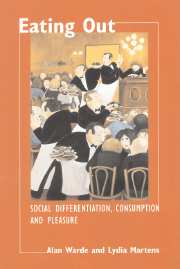Book contents
Part III - Delivery
Published online by Cambridge University Press: 22 September 2009
Summary
The process through which a consumer actually receives a good or service, and how that reception is managed, is a defining element of almost all consumption events. Even the most fleeting and simple of transactions, the activity of transferring money to someone else in exchange for goods, can be evaluated in terms of the quality of its delivery. Whether a shop assistant was pleasant, whether the mail order form was appropriate, whether the despatch of goods was quick are criteria influencing customer satisfaction. Consumption episodes which involve more elaborate and extensive servicing work are more susceptible to judgements of this kind. A meal in a restaurant may take several hours and involve repeated communication with staff; taking a holiday in a hotel may last a couple of weeks; a course of educational instruction may take years and involve sustained interaction; a relationship with a general practitioner may last decades. When the process of consumption is protracted, and where the level of personal interaction between provider and recipient is extensive or sensitive, then the nature of the setting and the human relationships involved become especially important. The nature of the experience, and hence the perceived quality of the episode, depend upon how the presentation and transaction of the service is managed.
The environment of delivery in the commercial mode is largely determined by the producer. This is the fundamental truth of Finkelstein's (1989) observation about the already given character of the restaurant as a setting.
- Type
- Chapter
- Information
- Eating OutSocial Differentiation, Consumption and Pleasure, pp. 113 - 116Publisher: Cambridge University PressPrint publication year: 2000

